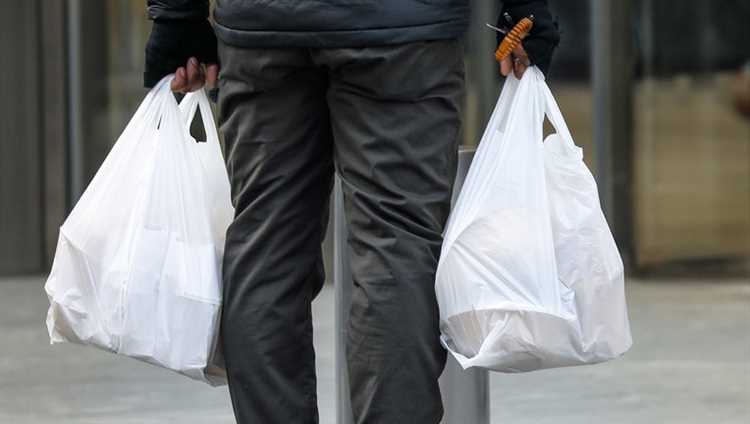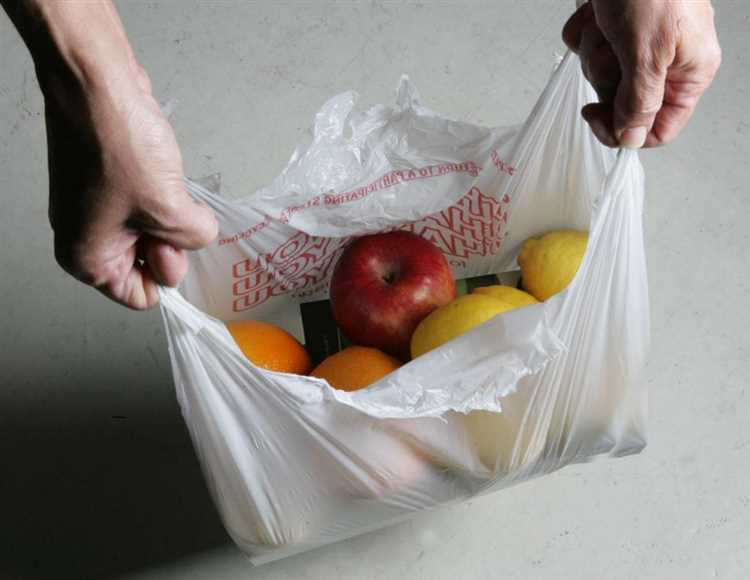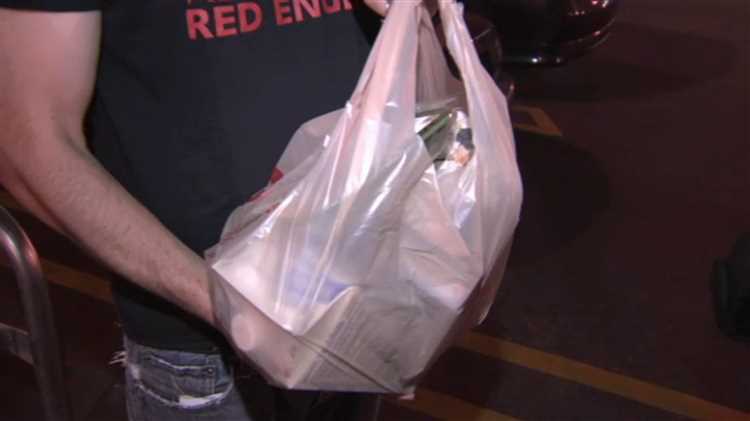
In an effort to reduce plastic waste and promote sustainability, California implemented a statewide bag fee in 2016. This fee is intended to discourage the use of single-use bags and encourage consumers to switch to reusable alternatives. The bag fee applies to most retailers, including grocery stores, pharmacies, and convenience stores.
The bag fee in California is currently set at 10 cents per bag. This means that every time a consumer decides to use a single-use bag, they will be charged an additional 10 cents. While this may seem like a small amount, it can add up quickly, especially for frequent shoppers. The goal of the bag fee is to incentivize consumers to bring their own reusable bags and reduce the amount of plastic waste generated.
Since the implementation of the bag fee, California has seen a significant reduction in the use of single-use bags. Many consumers have embraced the change and have made a conscious effort to bring their own reusable bags when shopping. The bag fee has also generated revenue that is used to support environmental initiatives and programs aimed at reducing plastic pollution.
It’s important to note that there are some exceptions to the bag fee. Certain types of bags, such as those used for bulk items, produce, or meats, are exempt from the fee. Additionally, customers who participate in government assistance programs are also exempt from paying the bag fee.
Overall, the bag fee in California serves as a reminder of the environmental impact of single-use bags and encourages consumers to make more sustainable choices. By bringing their own reusable bags, Californians can contribute to a cleaner and healthier environment for future generations.
- Overview of Bag Fee in California
- Understanding the Bag Fee
- Bag Fee Calculation Method
- Environmental Impact of the Bag Fee
- Reduction in Plastic Bag Usage
- Better Waste Management
- Bag Fee Implementation Process
- Exceptions to the Bag Fee
- Bag Fee in Other States
- New York
- Hawaii
- Question and answer:
- What is the bag fee in California?
- Why does California have a bag fee?
- Are all types of bags subject to the fee?
- Do I have to pay the bag fee if I bring my own bag?
- How much money has the bag fee in California generated?
- What is the bag fee in California?
Overview of Bag Fee in California
The bag fee in California refers to a state-wide policy that requires customers to pay for single-use bags at most retail stores. This fee is aimed at reducing the consumption of plastic bags and promoting the use of reusable options to help protect the environment.
Starting from July 1, 2015, the bag fee applies to all retail establishments that sell perishable or non-perishable goods, including grocery stores, supermarkets, convenience stores, pharmacies, and clothing stores. The fee is charged per bag and varies depending on the location within the state.
The purpose of the bag fee is to encourage consumers to bring their own reusable bags when shopping. By implementing this policy, the state aims to reduce the environmental impact of single-use plastic bags, which are known to contribute to pollution and harm wildlife.
According to studies, the bag fee in California has been effective in reducing plastic bag consumption. It has also led to an increased adoption of reusable bags among consumers, further contributing to a more sustainable future.
It is important to note that there are exceptions to the bag fee policy. Customers who participate in government assistance programs, such as the California Special Supplemental Nutrition Program for Women, Infants, and Children (WIC) or the California CalFresh Program, may be exempt from paying the fee.
In conclusion, the bag fee in California serves as a significant step towards reducing plastic waste and promoting sustainable practices among consumers. By encouraging the use of reusable bags, the state aims to protect the environment and create a greener future for all.
Understanding the Bag Fee
In an effort to reduce plastic waste and encourage more sustainable practices, California implemented a bag fee in 2016. The bag fee applies to most types of bags provided by retailers, including grocery and retail stores.
The bag fee is set at $0.10 per bag. This means that for every bag you request from a retailer, you will be charged an additional $0.10. The fee is not a tax, but rather a way to encourage consumers to bring their own reusable bags and reduce their reliance on single-use plastic bags.
However, there are certain exceptions to the bag fee. Restaurants and small businesses with fewer than 10 employees are exempt from charging the fee. Additionally, some types of bags are not subject to the fee, such as bags used for loose produce, bags used for containing prescriptions, and bags used for carrying perishable food items.
The revenue generated from the bag fee is used to fund environmental programs and initiatives aimed at reducing plastic waste and promoting the use of reusable bags. By implementing this fee, California hopes to raise awareness about the negative impact of plastic bags on the environment and encourage individuals to make more sustainable choices.
| Types of Bags | Subject to Bag Fee |
|---|---|
| Grocery bags | Yes |
| Retail bags | Yes |
| Restaurant bags | No |
| Prescription bags | No |
| Produce bags | No |
It is important to note that the bag fee is not meant to place a burden on consumers, but rather to encourage more sustainable practices. By bringing your own reusable bags when shopping, you can save money and help protect the environment.
Bag Fee Calculation Method
California’s bag fee is calculated based on the type of bag and the number of bags used by a customer. The fee is intended to encourage the use of reusable bags and reduce the consumption of single-use plastic bags.
When purchasing goods at a store, customers are typically offered two types of bags – reusable bags and single-use plastic bags. The bag fee is only applied to single-use plastic bags, while reusable bags can be used without incurring any additional cost.
The bag fee is usually set at a specified amount per bag. For example, it could be $0.10 per bag. If a customer chooses to use a single-use plastic bag, they will be charged the bag fee for each bag they use.
The bag fee is typically added to the total cost of the purchase and displayed separately on the receipt. This allows customers to see how much they are being charged for using single-use plastic bags.
Some stores may choose to offer discounts or incentives to customers who bring their own reusable bags. In this case, the bag fee may be waived or reduced if the customer chooses to use a reusable bag instead of a single-use plastic bag.
It is important for customers to be aware of the bag fee and consider bringing their own reusable bags to help reduce their environmental impact and save money on bag fees.
Environmental Impact of the Bag Fee
One of the main reasons for implementing a bag fee in California is the environmental impact caused by single-use plastic bags. These bags are non-biodegradable and take thousands of years to break down, causing long-term damage to the ecosystem.
The bag fee encourages consumers to bring their own reusable bags, reducing the demand for single-use plastic bags. By doing so, it helps in reducing the amount of plastic waste generated, which ends up in landfills or pollutes water bodies such as oceans, rivers, and lakes.
Plastic bags also pose a threat to wildlife. Marine animals, such as sea turtles and birds, often mistake them for food and ingest them, leading to dire consequences for their health. Additionally, plastic bags can entangle animals, causing injuries or even death.
Reduction in Plastic Bag Usage
Since the implementation of the bag fee, there has been a significant decrease in the consumption of single-use plastic bags in California. People are opting for reusable alternatives such as cloth bags, canvas bags, and paper bags, which are more environmentally friendly.
This reduction in plastic bag usage has resulted in a decrease in the production of these bags, which means less energy and resources are required for their manufacturing. This, in turn, leads to a reduced carbon footprint and decreased greenhouse gas emissions.
Better Waste Management

The bag fee has also prompted a change in waste management practices. With fewer plastic bags being disposed of, it becomes easier to manage and process waste effectively. Recycling programs have been able to divert resources towards other recyclable materials, leading to a more efficient recycling system overall.
Furthermore, the bag fee has encouraged people to adopt sustainable habits when it comes to handling waste. Consumers are more conscious of their choices and are more likely to recycle or repurpose other items, reducing the overall environmental impact of their consumption.
Overall, the bag fee in California has had a positive environmental impact by reducing plastic bag usage, decreasing plastic waste, improving waste management, and promoting sustainable habits. It serves as a reminder of the importance of individual actions in protecting the environment and preserving it for future generations.
Bag Fee Implementation Process
The implementation process for the bag fee in California involved several steps and considerations. Here is an overview of how the bag fee was implemented:
- Legislation: The bag fee was introduced through legislation, which required the support and approval of lawmakers. The legislation outlined the objectives, scope, and details of the bag fee.
- Public Awareness: To gain public support and understanding of the bag fee, there was a comprehensive public awareness campaign. This campaign aimed to inform the public about the environmental impacts of single-use bags and the benefits of reducing their usage.
- Regulations Development: After the legislation was passed, regulatory agencies were responsible for developing the specific regulations and guidelines for implementing the bag fee. These regulations included details such as the amount of the fee, exemption criteria, and reporting requirements for retailers.
- Retailer Education: In preparation for the implementation of the bag fee, retailers were provided with education and training materials to ensure their understanding of the new regulations. This helped them to accurately implement the fee and inform their customers about the changes.
- Implementation Date: A specific date was set for the bag fee to go into effect. This provided a timeline for retailers to prepare and make any necessary changes to their operations and point-of-sale systems to accommodate the fee.
- Fee Collection: Once the bag fee was implemented, retailers were required to collect the fee from customers who opted for bags at checkout. The collected fees were then reported and remitted to the appropriate government agency as specified in the regulations.
- Monitoring and Evaluation: Regular monitoring and evaluation of the bag fee’s effectiveness and compliance were conducted to ensure its successful implementation. This included tracking data on bag usage, assessing environmental impacts, and addressing any issues or challenges that arose.
The bag fee implementation process aimed to reduce single-use bag consumption and promote reusable alternatives, ultimately contributing to environmental sustainability in California.
Exceptions to the Bag Fee
While most retailers in California charge a bag fee for each single-use plastic or paper bag provided to customers, there are a few exceptions to this rule.
Here are some situations where you may be exempt from paying the bag fee:
- If you are receiving public assistance such as CalFresh, WIC, or Supplemental Security Income (SSI), you may be eligible for an exemption from the bag fee. Make sure to inform the cashier about your eligibility before making your purchase.
- If you are utilizing the WIC program and using your WIC Card to purchase only items that are authorized for WIC benefits, you are not required to pay the bag fee.
- If you are purchasing bulk items such as fruits, vegetables, nuts, grains, or candy, and it is not feasible to package these items in a reusable bag, the bag fee may not apply.
- If you are purchasing prescription medicines from a pharmacy, the bag fee does not apply to the paper bags provided for these items.
- If you are purchasing a bottle of liquor or alcoholic beverage, the bag fee does not apply to the paper bags provided by the retailer.
It is important to note that while these exemptions exist, retailers are not obligated to provide free bags in these cases. They may still charge for bags or encourage customers to bring their own reusable bags.
Bag Fee in Other States
California is not the only state to implement a bag fee in an effort to reduce plastic waste. Several other states have also introduced similar measures to encourage consumers to bring reusable bags when shopping.
New York
In New York, a statewide ban on single-use plastic bags went into effect on March 1, 2020. Under this law, most retailers are prohibited from providing plastic bags to customers, and customers are charged a minimum of $0.05 for each paper bag they use. Certain exemptions apply, such as bags used for bulk items or prescription medication.
Hawaii

Hawaii has taken a more stringent approach to reducing plastic bag usage. The state has banned both plastic and paper bags at most retailers since 2015. Customers are encouraged to bring their own reusable bags, but if they forget, some retailers offer paper bags for a fee ranging from $0.10 to $0.25 per bag.
| State | Plastic Bag Ban | Fee for Paper Bags |
|---|---|---|
| California | Yes | $0.10 |
| New York | Yes | $0.05 |
| Hawaii | Yes | $0.10 – $0.25 |
Beyond these states, many other states have also implemented bag fees or bans to combat plastic waste. It is always a good idea to check the local regulations when traveling to ensure you are prepared and aware of any applicable fees or restrictions.
Question and answer:
What is the bag fee in California?
The bag fee in California is 10 cents per bag.
Why does California have a bag fee?
California implemented the bag fee to reduce plastic waste and encourage the use of reusable bags.
Are all types of bags subject to the fee?
No, not all types of bags are subject to the fee. The fee only applies to grocery bags and other carryout bags provided by retail stores.
Do I have to pay the bag fee if I bring my own bag?
No, if you bring your own bag, you do not have to pay the bag fee.
How much money has the bag fee in California generated?
The bag fee in California has generated millions of dollars, which has been used for various environmental programs and initiatives.
What is the bag fee in California?
In California, the bag fee is currently $0.10 per bag.